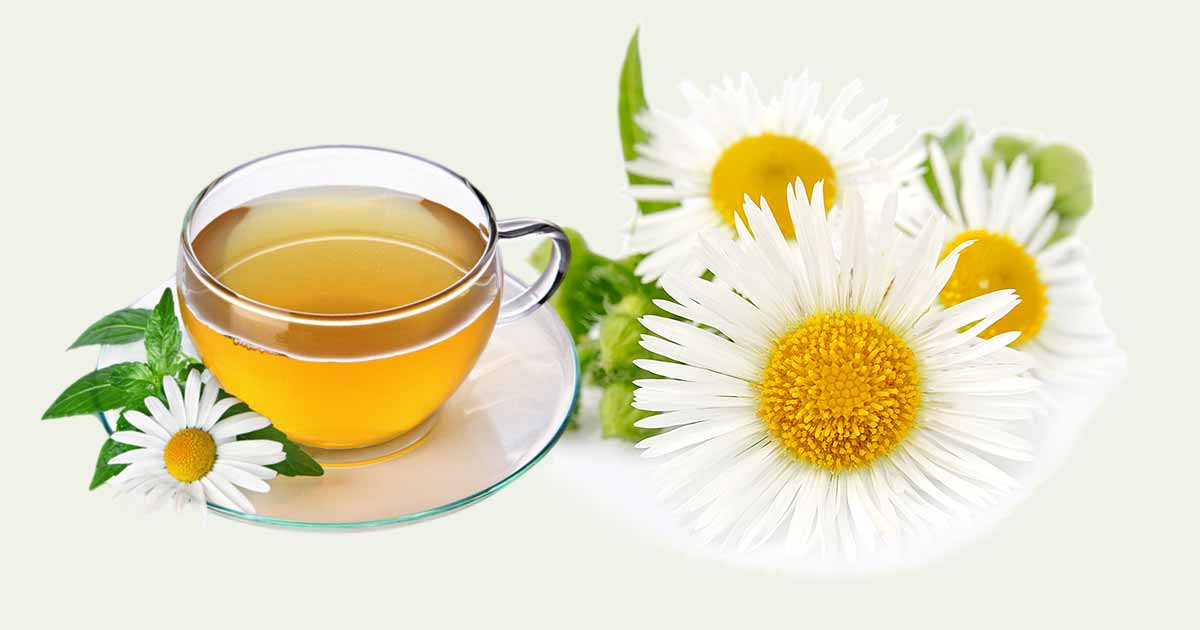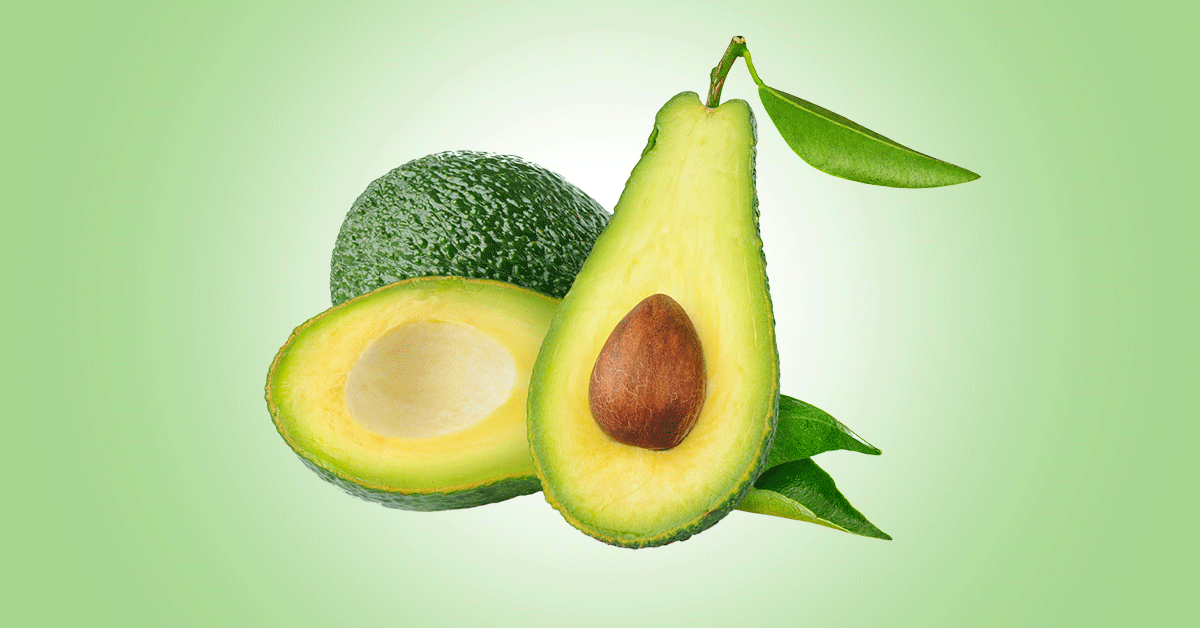Chamomile (Matricaria chamomilla) is a plant belonging to the daisy family (Asteraceae/Compositae family). It is one of the oldest medicinal herb. It has two main varieties: the German Chamomile (Chamomilla recutita) and Roman Chamomile (Chamaemelum nobile). The German variety is the most common type.
The annual plant is native to southern and Eastern Europe and Western Asia, but now grows well in temperate regions in meadows and fields. It is related to wild chamomile, a common weed in gardens and roadside, however, the inflorescences of the wild type lack ray flowers.
The flowers are daisy-like, with yellow centers, and white petals. The fresh and dried flowers yields infusion, liquid extracts and essential oils on processing. The herb has a sweet, grassy, and lightly fruity aroma.
It is highly cultivated in Germany, Hungary, France, Russia, and Brazil
Chamomile flowers contain medicinal constituents such as terpenoids and flavonoids. Preparations from chamomile are used in the management of inflammation, ulcer, insomnia, muscle spasm, hay fever, menstrual disorders, hemorrhoid, gastrointestinal disorder, and rheumatic pain.
Also, the essential oils are used in aromatherapy, hair care and the cosmetic industry to create products for soothing and softening the skin. Inhalation of the essential oils is used to relieve depression, and anxiety.
Chamomile Tea
Chamomile tea is a popular herbal tea available as powder, pure or blended with other herbal plants. It is steeped in hot water.
Dry powder of chamomile can be extracted with water, ethanol, or methanol. Chamomile tea is made from the aqueous extract of the powder. It contains low level of free apigenin, but high levels of apigenin-7-O-glucoside.
It contains other polyphenolic compounds such as coumarins (herniarin, umbelliferone and esculetin) and flavanoids (apigenin, leuteolin and quercetin).
Apart from the tea, other preparations include tinctures, poultices, and lotions.
Health benefits of Chamomile Tea
Chamomile tea has several health benefits which range from use to manage insomnia, nervous disorders, to rinse the mouth and throat in inflammatory conditions, to remove oral mucositis. It also has carminative, and antispasmodic effect.
The tea can also lower glucose levels, which helps to prevent diabetes. The tea infusion can also serve as gargle to manage inflammation in the mucous membranes of the mouth and throat.
Constituents of Chamomile
Chamomile contains about 0.24 to 2% volatile oils. During distillation, the oils changes from deep green to dark yellow when stored. There are many terpenoids, and flavonoids.
The terpenoids include α-bisabolol, isabolol oxides A and B, and its oxide azulenes, like chamazulene and acetylene derivatives.
- Sesquiterpene like farnesene, cadinene, furfural, spathulenol, proazulene (matricarin and matricin)
- Monoterpene like α-pinene,
- Sesquiterpene lactones such as nobilin and 3-epinobilin.
- (-)-alpha-bisabolol and chamazulene are the key volatile oils in terms of quantity.
- Other compounds include hydroxycoumarins, coumarins (herniarin and umbelliferone), and glycosides, acetylated derivates, patuletin as glucosides, anthemic acid, choline, tannin, and polysaccharides
- The flavonoids present is apigenin, luteolin, patuletin, and quercetin. The apigenin is the most active flavonoid constituent.
Nutritional Composition
Nutrient in the herb includes moisture, protein, ash, fiber, carbohydrate, and micronutrients like vitamin C, iron, zinc, and calcium.
Health Benefits of Chamomile
Chamomile has antioxidant, anti-inflammatory, mild astringent effect, among others.
Anti-inflammatory activity: Chamomile flowers contains volatile oils such as alpha-bisabolol, alpha-bisabolol oxides A & B, and matricin. They are converted to other compounds, such as chamazulene and other flavonoids. These compounds have anti-inflammatory action.
They have the additional advantage of penetrating the deeper skin tissue. The activity involves the inhibition of LPS-induced prostaglandin E(2) release and, also, the attenuation of cyclooxygenase (COX-2) enzyme activity.
It may be helpful in treating inflammatory conditions such as mild skin irritations, including sunburn, rashes, sores, and even eye inflammations.
Anti-diabetic effect: The herb may prevent hyperglycemia and diabetes by suppressing glucose levels in the blood, increasing liver glycogen storage and inhibition of sorbitol in the human erythrocytes.
As a natural antioxidant, it prevents oxidative stress, which helps to protect the pancreatic beta cells.
Wound healing: The herb may reduce wound size area, increase wound-breaking strength, hydroxyproline content, faster epithelialization, and improve the drying of wound.
Use in gastrointestinal problems: In traditional medicine, chamomile has been used to treat gastrointestinal issues, such as ulcer, stomach upset, flatulence, spasm, or colic. It is believed to remove the gas, soothe the stomach and relax the stomach muscles.
A commercial preparation of chamomile flower, peppermint leaf, liquorice root, angelica root, caraway fruit, milk thistle fruit and greater celandine herb (STW5, Iberogast), at certain doses, reduced acid output. Other additional anti-ulcer effect include increased mucin secretion, prostaglandin E (2) release and a decrease in leukotrienes.
Chamomile extract and apple pectin has also been used to treat acute, non-complicated diarrhea in children.
Anticancer property: Studies on apigenin – the most active flavonoid in the herb shows, it may inhibit skin, prostate, breast and ovarian cancer. It induces apoptosis (programmed cell death) in cancer cells, but not in normal cells.
Improves cardiovascular health: Flavonoids content in the herb may help to prevent the risk of death from coronary heart disease in the elderly.
Treat anxiety and seizure: German chamomile may have an anxiolytic effect on those with mild to moderate generalized anxiety disorder (GAD). Apigenin is the constituent with the anticonvulsant activity.
In a study using lavender, chamomile, rosemary, and lemon as aromatherapy massage, there was positive effect on self-esteem and anxiety.
Improve sleep: The tea and essential oils are used in aromatherapy to sedate and manage insomnia. Apigenin seems to bind to the benzodiazepine and GABA receptors in the brain.
Inhalation of the essential oils may also reduce the stress-induced increase in plasma adrenocorticotropic hormone (ACTH) levels.
Relieves common cold: Inhalation of the essential oils may be beneficial in relieving common colds, and other respiratory symptoms.
Osteoporosis: The herb extract stimulate osteoblastic cell differentiation, and show an anti-estrogenic effect. It may help people suffering from osteoporosis, a bone disorder that results from low bone mass, and excess bone resorption.
Hemorrhoids: Tincture of Roman chamomile is believed to treat inflammation in hemorrhoids.
Treat infant colic disorders: The herbal tea infusion was combined with other herbs such as vervain, licorice, fennel, balm mint seems to reduce colic in infants.
Treat eczema: Roman chamomile of the Manzana type may be effective in treating atopic eczema. It also has the added advantage of not causing allergic reaction like other chamomile type.
Drug Interaction
- Chamomile may interact with cyclosporine in patients who have had renal transplants through inhibition of P450 CYP1A2 and 3A4.
- It may have additive effect with other sedative and anxiolytic medications.
- It may also interact with warfarin by the inhibition of P450.
Side Effects
People who are sensitive to plants such as ragweed, chrysanthemums, or members of the Compositae family may develop a contact allergic reaction to chamomile. In a study, washing the eyes with chamomile tea in hay fever patients with conjunctivitis seems to worsen the eye inflammation. Drinking the tea caused no side effect.
The safety in children, pregnancy and breastfeeding has not been documented. In some places, pregnant women use it to treat morning sickness. It is well tolerated in most of the population.
However, the herb is considered safe. Some side effects may be due to contamination of the herb with “dog chamomile,” a similar plant in appearance but has strong allergic effect.
- https://www.researchgate.net/publication/265212195_Chamomile_tea_Herbal_hypoglycemic_alternative_for_conventional_medicine
- https://www.ncbi.nlm.nih.gov/pmc/articles/PMC2995283/
- https://www.ijabbr.com/article_7246_42b235e991c2c3676a7df58e7f9ec739.pdf
- https://core.ac.uk/download/pdf/233974348.pdf












